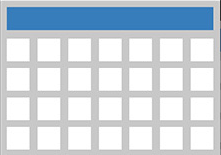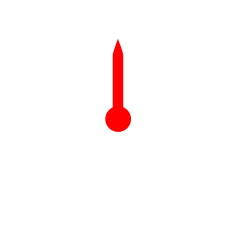

.jpg)
.jpg)
Headache is rapid onset, extremely painful, and often described as the most severe headache ever experienced. There may be nuasea, vomiting, confusion, loss of consciousness, or a seizure.
Factors include blood-vessel weakness, inherited causes (connective tissue problems, blood vessel malformations, family history), smoking, high blood pressure, arteriosclerosis (hardening of the arteries).
Seek immediate emergency medical attention. Treatments include surgical clipping of the aneurism or endovascular coiling (blocking the blood vessel with a coil so as to stop the bleeding).
.jpg)
.jpg)
Like with migraine, there is pain on both sides of the head (bilateral), that is throbbing (pulsating). It occurs <24 hours after ceasing caffeine.
Headache results from stopping caffeine.
Avoid excessive intake of caffeine. If impacting quality of life, stop caffeine consumption completely.

.jpg)
.jpg)
Chronic migraine (CM) is defined as ≥15 headache days per month for ≥3 months, in which ≥8 days per month meet the criteria for migraine with or without aura or respond to migraine-specific treatment.
Factors include familial (genetics/family history), stress, excessive caffeine, obesity, and ineffective medical management. Headache is associated with medication overuse.
Please click here to see approaches to prevention and treatment.

.jpg)
.jpg)
This one-sided pain, usually around one eye, forehead or temple, most often reaches maximum intensity quickly (within 5-10 minutes) and lasts from 15 minutes to 3 hours. Pain is severe and is often described as the worst pain ever felt. Pain occurs seasonally for 80% of sufferers (often spring or fall). Patient can have blocked or runny nose on same side as headache, eye symptoms (redness, watering, or drooping eyelid), or facial flushing/sweating. It is more common in men (five to six times) and typically begins between 20 and 50 years of age.
This headache is more common in men, heavy smokers; 1 in 20 patients have an affected family member. It can be triggered by alcohol (also exacerbates attacks), odors (paint/petrol fumes, solvents and perfumes), exercise, histamine, nitroglycerine, and becoming too hot.
Treat as quickly as possible to reduce level of pain. Oxygen can work quickly (within 15-20 minutes) and/or sumatriptan injection. Prevention includes medication such as verapamil or short-term corticosteriods. Non-invasive vagal-nerve stimulation now FDA approved.
.jpg)
.jpg)
Mild recurrent pain occurs on both sides of the front of the head (frontal and bilateral) and is provoked by eye strain.
Headache is caused by impaired vision or convergence (where eyes don't work together while attempting to focus).
See your eye doctor.
.jpg)
.jpg)
Headache occurs during or after strenuous sustained exercise. Usually throbbing, it affects both sides of the head (bilateral) and lasts from 5 minutes to 48 hours.
Headache is brought on by strenuous sustained exercise, such as rowing, swimming, weight lifting, and running. It is sometimes associated with an underlying medical condition (secondary).
Patient needs a specialist referral to a neurologist for evaluation to exclude underlying causes. As the headache can be predictable, taking an NSAID a couple of hours before exertion can help with prevention. Medicines that may be indicated include propranolol.
.jpg)
.jpg)
This mild-to-moderate headache located at the front of the head (frontal), it is not throbbing (non-pulsatile).
This headache is more common in those with migraine. It is precipitated by fasting for more than 16 hours.
Headache will usually resolve within 72 hours after eating. It can be prevented by having regular meals on a daily basis.
.jpg)
.jpg)
Headache and tenderness can be persistent and severe, usually involving both temples with scalp tenderness. There can be fever, jaw pain (on chewing or opening the mouth wide), tiredness, weight loss, and sudden visual loss in one eye or double vision.
Headache occurs when the lining of arteries becomes inflamed (most commonly the temporal arteries). Cause unknown, but there can be a genetic (familial) predisposition.
Urgent assessment by physician is required. Examination can reveal tender, cord-like temporal arteries. The ESR (erythrocyte sedimentation rate) and CRP (C-reactive protein) are both elevated. A diagnosis requires a temporal artery biopsy (taking a small piece for testing). Immediate treatment with high dose corticosteroids is required.
.jpg)
.jpg)
This moderate-to-severe headache is diffuse (widespread) and accompanied by fever (high temperature) and other symptoms and clinical signs of infection.
Headache is caused by an underlying infection.
Medical assessment is required to establish and treat the source of infection. In some age groups, it is important to exclude meningitis or encephalitis (inflammation of the brain or the membrane surrounding the brain) as the cause of headache.
.jpg)
.jpg)
Headache tends to be worst in the morning and resolve throughout the day.
Headache is caused by severe hypertension (high blood pressure).
Prevention revolves around lifestyle measures to maintain a healthy blood pressure, such as attaining a healthy body mass index (weight), and the appropriate medical management of hypertension.
.jpg)
.jpg)
Headache is similar to a migraine, occuring either around menstruation or ovulation.
Headache results from fluctuations in levels of ovarian steroid hormones (including estrogen).
Headache is treated by amenorrheoa (prevention of periods) induced by continuous contraceptive pill, or "mini prophylaxis" with perimenstrual headache prevention with NSAIDs, or other migraine medications. Hysterectomy is of no benefit.
.jpg)
.jpg)
Headache has symptoms of migraine plus an aura. Aura symptoms can develop progressively over 5 minutes, last 5-60 minutes, and are classified by the part of the nervous system that is affected (visual, sensory, motor, or language). Visual auras occur most commonly, with symptoms including zigzag lines, shimmering lights, and scotoma (an area of lost or reduced vision). A wide range of other aura symptoms can occur, including pins and needles in the face, tongue, or other body area; vertigo (feeling of loss of balance or whirling); and tinnitus (ringing in the ears).
Precipitating factors are the same as for migraine without aura.
Please click here for a description of treatment and prevention.
.jpg)
.jpg)
This moderate-to-severe throbbing pain is made worse by movement. It has a gradual onset, peaks, and then subsides lasting 4-72 hours. Headache: 60% are one sided, 40% occur on both sides. Headaches occur 1-10 times per month. Patients may have gastrointerstinal (tummy) upsets and sensitivity to light and/or noises.
Headache results from familial (genetics) factors, stress, excessive caffeine, skipped meals, sleep problems, obesity, stage of menstrual cycle, and exposure to other triggers.
Please click here to see diagnosis, prevention and treatment.
.jpg)
.jpg)
Patients can often pinpoint exactly when symptoms started. Headaches develop rapidly, and the level of pain may fluctuate, but it is always there (often on both sides of the head), and there can be sensitivity to light and sound. Pain most often throbbing, but can feel stabbing, tightening, burning, or aching.
Cause is often unkown, but can be associated with viral or other types of infections. It is not typically caused by migraine or a tension-type headache.
NDPH can resolve spontaneously (on its own) after some months, or it can continue and need medical treatment. Traditional headache medicines are not helpful. Treatment options include antiseizure (anticonvulsant) medication, some antidepressants, muscle relaxants, and medicines used for the prevention of migraine.
.jpg)
.jpg)
Headache happens after mild traumatic brain injury. It can include symptoms of concussion, such as dizziness, neck pain, loss of balance, nausea and vomiting, poor memory or concentration, irritability, and difficulty sleeping. Patient can have symptoms similar to migraine or a tension-type headache.
Headache does not require direct trauma to the head (can be indirect forces), and it can be caused by minor trauma. Headache often results from sports- or military-related injuries.
Headaches needs assessed by an expert in headaches and concussion. Discuss risk of long-term complications of repeated trauma, including appropriate convalescence (recovery period) and avoidance of risk factors (things that could increase the risk of another head injury).
.jpg)
.jpg)
Patient has constant pain in cheekbones, forehead, or bridge of nose and may have other associated sinus symptoms, such as fever or nasal discharge (a runny nose). Self-diagnosed cases may be migraine.
Headache can be caused by infection, deviated nasal septum and other anatomical abnormalities, nasal polyps, and allergies.
Headache is usually diagnosed by symptoms and physical examination but can require an MRI or CT scan. Possible medical treatments include antibiotics, antihistamines, and decongestants. Sinus surgery may sometimes be required. Allergy treatment may possibly prevent the headache.
.jpg)
.jpg)
Patient has pain and tenderness in the temples, assocated with face, jaw, neck, or shoulder pain. The jaw may make clicking or popping sounds and may become stuck. Problems opening mouth wide.
Cause often unknown, but it may result from injury to jaw, grinding or clenching of teeth, arthritis of TMJ, and stress.
Pain relief is achieved by aniti-inflammatory medicine, muscle relaxants, occlusal appliances (bite plate), biofeedback, and sometimes, joint injections or surgery.
.jpg)
.jpg)
This dull, aching, non-pulsating headache has a feeling of tightness/pressure across the forehead, back, and sides of the head. Headache is associated with scalp, neck, and shoulder tension/tenderness. For a comparison with the syptoms of migraine and tension-type headache, please click here.
Cause is not known. However, headache is often triggered by stress and may be associated with a mild form of migraine.
Treatments include managing stress (avoiding/modify factors causing stress, relaxation techniques) and analgesics (NSAIDs, acetaminophen) possibly combined with caffeine to improve effectiveness.
.jpg)
.jpg)
Headache consists of severe, sudden, short lasting, stabbing face pain.
Headache can be caused by pressure on the trigeminal nerve by a blood vessel(s) or a tumor, after trauma to the nerve (following surgery or a facial injury), or with Multiple Sclerosis. Attacks can be brought on by stimulating the nerve (touching the face, vibration, eating, drinking, and exposure to wind).
Medication includes anticonvulsants. Neurorurgery may be necessary If symptoms are severe and medication is/has become ineffective.
.jpg)
.jpg)
Symptoms vary depending upon the type and location of the tumor and usually develop slowly and progessively. Headache can be diffuse and may not respond to usual headache remedies. Nausea or vomiting is possible. A range of neurological syptoms can occur, depending on tumor location.
Tumor can result from metastasis (spread) from cancer in another part of the body (secondary). The cause of primary brian tumors (those originating in the brian) is often not known.
In general, treatment depends on the type, location, size, and stage of the tumor and other clinical features. Options include chemotherapy, radiotherapy, surgery, anticonvulsants to prevent seizures, and steroids.
This activity is provided by Med Learning Group. Supported by an educational grant from Lilly.
This activity is co-provided by Ultimate Medial Academy/CCM and Amedco.
 Copyright © 2025 Med Learning Group. Built by Divigner. All rights reserved.
Copyright © 2025 Med Learning Group. Built by Divigner. All rights reserved.